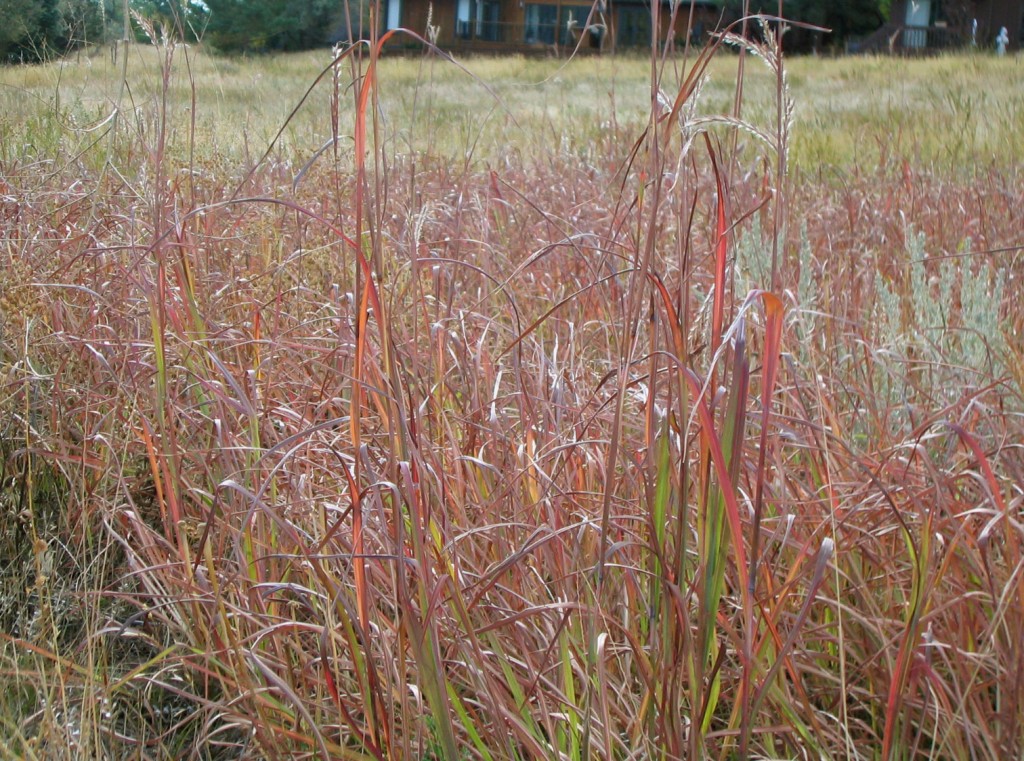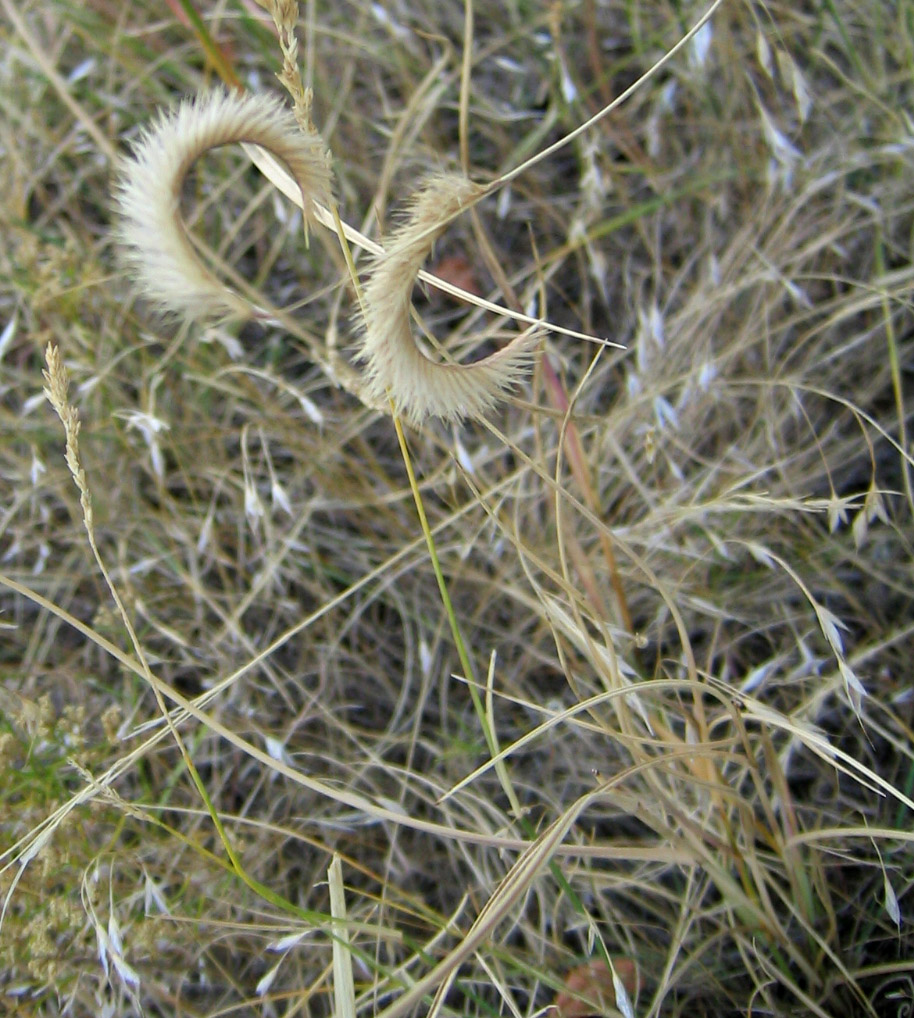I’ve fallen in love all over again with the native grasses of the prairie. Four autumns in Colorado, and every year I think they must be getting more stunning.
Now stunning is a relative term here. They’re stunning in the way many native plants are—in a subtle rather than showy way, rewarding those who pay close attention and observe them over time. In other words, they don’t knock your socks off until you’ve been gazing at them a while. Getting to know them. Making them your friends.
 Well, lucky me, I get to walk among them every day. I live at the edge of open space, where Bodhi and I stroll every afternoon. He sniffs for dogs and deer and foxes; I watch the native plants, including large patches of prairie tallgrass, the splendid big bluestem (Andropogon gerardii). In the autumn it turns the colors you see above—from lavender to maroon.
Well, lucky me, I get to walk among them every day. I live at the edge of open space, where Bodhi and I stroll every afternoon. He sniffs for dogs and deer and foxes; I watch the native plants, including large patches of prairie tallgrass, the splendid big bluestem (Andropogon gerardii). In the autumn it turns the colors you see above—from lavender to maroon.
The amazing thing about the native grasses is what survivors they are. For thousands of years tallgrass prairie covered our area at the edge of the Rockies and also blanketed the high plains to the east of us. The grasses could grow as high as the top of a man’s head, though here in my neighborhood the bunches of grass blades are short, hugging the ground, while the flowering stems reach almost to my hips. At the top of the stem are the flowers and seeds, which yield another of big bluestem’s names, “turkey foot.”
Occasionally the grass blades turn clearly, deeply blue. (Anyone wowed yet?)
Big bluestem held the sod in place with its underground network of rhizomes. Only too late, after the prairie sod had been plowed up for corn and wheat, did farmers realize what a service the native bunch grasses had been doing, holding the ground together. My friend Julene Bair, in her recent article in High Country News, says that a square yard of prairie sod might hold five miles of roots.
Another gem of prairie grass is blue grama, the state grass of Colorado. It is also called “gramma’s eyelash” for obvious reasons:
Blue grama is a variety of shortgrass, part of the prairie grass system that covered most of the Midwest and is mixed in with tallgrass species here at the edge of the Rockies.
But it’s the tallgrass that captures my heart this season. On a hike just north of Boulder, I enjoy a bright October hillside, the autumn colors rich and variegated:
I think about what the land looked like before the Europeans brought their own grasses for their cattle, thinking the ones they found in the new world were not suitable. The old-world grasses turn yellow in autumn, not red. In the time before Europeans, instead of small red patches, did whole hillsides glow burgundy?
Did the grasses match the soil, which in my neighborhood is shaded toward mauve?
 In getting to know the native grasses and flowers, I’ve come to understand why I enjoy them so. My ancestors were part of the European tide that tried to wash all evidence of natives—human and other—from these shores. They replaced native plants with flowers from the old countries; they mowed down whole forests, ignoring the bounty of food within them, because they wanted to eat the grains of their home cultures.
In getting to know the native grasses and flowers, I’ve come to understand why I enjoy them so. My ancestors were part of the European tide that tried to wash all evidence of natives—human and other—from these shores. They replaced native plants with flowers from the old countries; they mowed down whole forests, ignoring the bounty of food within them, because they wanted to eat the grains of their home cultures.
My ancestors could not love what was here.
Now, I wander the open spaces picking out newly familiar shapes, splendid colors of plants that pierce me with their beauty. Especially in yesterday’s dusting of fresh snow:
I am learning to love what is here, to appreciate the particular beauty that remains. To reopen a path of respect between humans and the flora of this land. It has been some centuries since the ground enjoyed this kind of recognition.
Who knows, from such love, what other paths may open?






The colors of the grasses have been blowing me away this fall too, Priscilla. Your pictures here capture some of that beauty, as do your words. I AM stunned by the beauty and only wish more people appreciated grass as much as they do trees. Maybe we’d have more of it left if they did. Thanks for linking to my editorial, BTW. That was a pleasant surprise.
Julene, your editorial is terrific! Those who want more info on the political implications of grass and prairie, read it here. I’m a newbie to the prairie, but it is winning my heart.
I love this post! It reminds of my father, a botanist who studied grasses (he was born in Ouray, CO). Thanks for sharing your knowledge and insights.
Katharine
Ouray–what a beautiful place! Grasses are the hardest things for me to identify. We learn what we teach, right? So I’m learning. Glad you enjoyed it.
I am indeed wowed! I’ve been wondering what those maroon-colored grasses are on my hikes, thanks for letting us know they’re big bluestems. Also wowed by your subsequent posts, each a gem of earth-awareness.